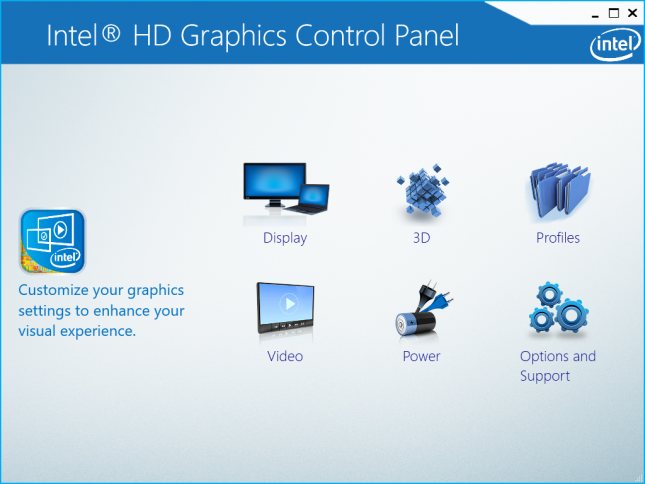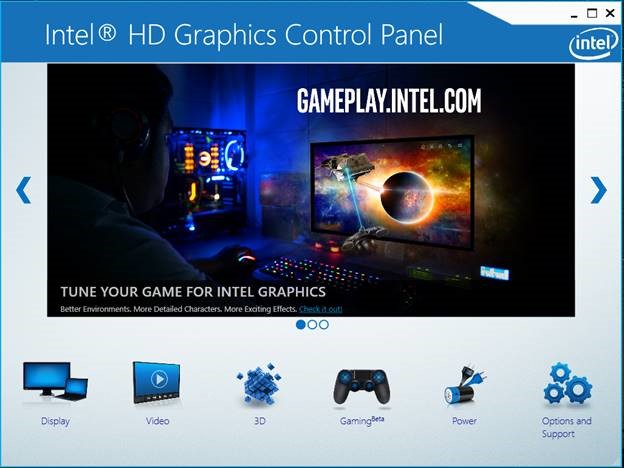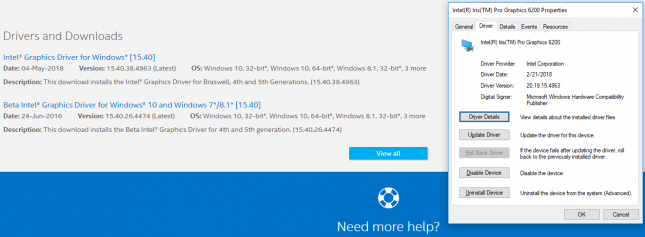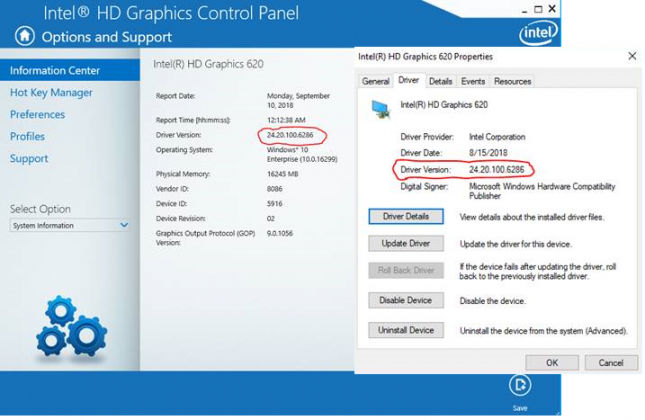Legit Reviews Exclusive: Lisa Pearce Interview on Intel Graphics Software
Legit Reviews was recently able to get a Lisa Pearce, Intel Vice President, Platform Engineering Group Director, Visual and Parallel Computing Group Software Engineering, to sit down and talk about iGPU and dGPU graphics drivers. Intel recently announced that they will be bringing a discrete graphics card solution to market in 2020. This is the first Intel graphics interview by anyone since they announced that they were entering the dGPU market.
Intels GPU project is a massive undertaking and will need excellent drivers and software to be developed. Graphics cards are useful for rendering graphics in 3D video games, but are also used for cryptocurrency mining, artificial intelligence and other applications that love performing computations in parallel. This means that Lisa Pearce is leading the software team that has been assigned the monumental task of delivering stable drivers that will work for the applications of today and the ones that are being dreamed up for tomorrow.
Can you tell us a little bit about your current role at Intel?
Sure, I started off as a 3D graphics driver developer way back in the day, spent many years focused on areas like video playback and transcoding and now I am the director of the Intel Graphics Software team. As part of this role, Im chartered to lead the software transformation as Intel evolves from a processor graphics company to a discrete graphics company.
So, you are running the team on the software side of things for graphics at Intel. How large is that team and where is that team located?
It isnt easy to quote a size as we cover a wide span of business and also proactively share resources with many areas. However, Id say that anyone who has worked on graphics drivers knows that doing a solid quality tuned graphics driver is no small effort and many of hundreds of engineers are required.
What is one thing that Intel does better than anyone else when it comes to graphics drivers? (Or what are you most proud of?)
The Intel Graphics business is larger than most people probably realize. In the past it has been focused on the PC Client market in power and cost constrained systems. However, Intel graphics has a huge install base. Im most proud of our ability over the years to deliver graphics drivers that basically light up a billion screens around the world. It is cool to think about what is possible if we can make improvements that affect that large of an existing install base and make their graphics and gaming experiences better.
What area would you like to improve the most?
That is very easy, its the gaming experience. We have a tremendous amount of work going into improving our gaming experience on the more constrained form factor where integrated graphics is used. This is one area where we have made solid strides this year with day0 launch drivers, getting best automatic game settings and driver optimizations. We have a long way to go on this, but are off to a good start.
You provided us with a couple pictures of the Intel graphics test lab. This is the first time that we have see your lab! Can you explain what your team is doing in those images?
Absolutely. These pictures were taken as we were assessing the progress on a next generation integrated graphics product that we currently have under early testing. This picture above was during a review of our automated test results and the second was during a demo of the latest games running on this new part (we were testing the latest WOW release).
Those platforms appear to be development boards. Could those be the upcoming Intel Core i9 Coffee Lake processors being tested? [Those are likely Intel 10nm Cannon Lake processors being tested now that we think about it.]
No, this is further into the future. It is a future generation integrated graphics product that we will discuss next time.
About how many hours of testing take place behind the scenes for the first graphics driver for a brand new Intel graphics controller? Intel has shipped over 1 billion graphics solutions over the years and you seldom hear about Intel driver stability issues.
Our testing evolves as we execute a product that is currently in development. The testing builds as the functionality builds up. As things become more and more functional they go into a continuous integration mode where we do spot tests after every check-in, regressions every night and a longer test pass over the week. Our final testing pass for a major production driver is longer first time through, but then it is easier to do follow up releases with focused testing. We are always working to reduce test execution hours through further automation. I cant give you an absolute number of test hours, but I can say that the effort is fairly massive if you want to test a graphics driver well and we have hundreds of systems in automation racks to get results quickly.
AMD recently claimed to have the most stable workstation and gaming driver on the market. The independent test lab ran systems through multiple instances of CRASH, a four-hour automated program in Microsofts Hardware Lab Kit (HLK). CRASH contains a variety of graphical functions across DirectX 9, 10 and 11 including changes in resolution, color settings, screen rotations, color overlays, sleeping and waking up. Intel was not included in the testing. Is that a test that you internally use and do you wish you were included?
Yes, I saw that report and wished that we were included! Im far too familiar with CRASH. We do run it and also have some things we have done to speed up time to failure on CRASH so we can flush at issues much more quickly in our test labs. That said, we also focus on a wide range of other stress tests that we also feel are needed to flush out system stability issues. The challenge with graphics driver stability is that it is sometimes hard to see the remaining issues lingering until you get testing with a very wide install base. This is where we partner with our OS partners and key customer accounts to flush out stability issues by having a broader population under test.
I see someone playing WoW under the name Gfxlisa. Are you a gamer?
You have a good eye! This is my team showing me some latest fixes on the recent WoW release and used the Gfxlisa avatar. Im a casual gamer myself and usually game about 2 hours per week.
What is your favorite game genre and game title?
I like to try out some of the latest titles for my team, but I generally like action games. A good stress relief!
As a gamer you must be ecstatic that Intel will be entering the discrete graphics card market in 2020. Some dont believe that the first discrete graphics card from Intel will be aimed at gamers. Can you shed any light on that to squash those rumors now?
Im incredibly excited to see us deliver a product that isnt constrained by the power and cost needs of integrated (processor) graphics. I cant comment yet on the specifics of the first discrete graphics product as it is still too early to share that plan publicly.
Available today from @Rebellion: #StrangeBrigade. Download the latest launch driver and begin your adventure! https://t.co/Cj8OtNZRlu #IntelGraphics pic.twitter.com/qXkQf1TvDm
— Intel Graphics (@IntelGraphics) August 30, 2018
Gamers need launch day drivers. Intel released a Day 0, Launch Ready Graphics Driver for Windows 10 April Update and more recently for the launch of Strange Brigade. Is this something that we will continue to see from Intel rather than quarterly driver releases?
Absolutely! We are on a mission to transform ourselves from a high volume, stability driven team to a team living on the edge of title releases that can push out solid drivers within days of a fix. The key thing is releasing when we have something that is substantial enough to add value and that we can test it with confidence. We have been hitting a higher gear of releases this year, but clearly need to double down on that leading into discrete graphics products.
What process does Intel use to determine what gets a launch driver and what does not as it doesnt seem Intel is limiting launch drivers to just game titles?
That is a great question Nate. There is no golden rule from us on what would qualify as a launch driver. Basically if we feel something needs to be enabled for our end users for something new coming (OS, game title, new video app, etc) we will work to get a driver out as quickly as possible. Now within that, we are focused heavy on AAA game titles, popular Indie titles and major OS releases. Also, due to the form factors for integrated graphics products, we will not release a launch driver for a title that isnt playable.
Can you talk about what graphics solutions will get launch day updates and what will not? We have some Intel Iris Pro Graphics 6200 systems (Intel Core i7-5775C ‘Broadwell’ CPU from 2015) that we use in the office and it feels like they have been forgotten. What products currently qualify for launch day drivers?
That is a system that was right before we started into a continuous unified driver stream unfortunately. It is from our older graphics architecture that was before our change to delivery consistent unified drivers going forward. When we enter discrete graphics we will have a very long tail of support and driver updates so the intent is no Intel Graphics product left behind.
You can see the products supported in our latest releases on the bottom of the driver download page for each release. These are the product versions that will get the same consistent updates, performance improvements and Day0 launch drivers.
Is Intel going to completely redesign the driver solution for the discrete graphics cards (Arctic Sound and Jupiter Sound) hit the market or will it look similar to the Intel HD Graphics Control Panel we use today?
Short answer is yes. We have been making improvements to our control panel this year which also includes some tie to automatic game settings, game advertisements, etc. The UI snapshot you have was from older products. The UI for our latest driver releases has some key improvements, here is a snapshot and Id recommend checking it out:
Going forward, of course we will want a user interface that drives a great experience for the end users and especially for gamers. These plans are under active development and we will definitely reach out for feedback once it is ready!
What else can you tell us about the software for your discrete GPU solution that is coming to market in 2020? Will you still have one unified graphics driver when the Intel discrete graphics solutions are ready to be released or will there be separate builds for integrated and discrete?
The software side will be a consistent stack that supports both integrated and discrete graphics products. Similar to our stack today, it will also have some sharing across operating systems to help with a consistent experience regardless of your chosen OS. So overall, the code base is shared. Now will there be separate builds for integrated vs discrete? We are not expecting major differences as of our plans today, but will always assess as we go especially if we need to target releases to gamers vs broad release. Our goal will be to remain unified always as it helps all end users, PC Client customers, our own test execution as well as the testing with our ISV and OSV partners.
The Intel graphics drivers release notes used to provide little information as to what Intel is doing. Intel seems to have been improving that transparency lately. Will we continue to see improvements here?
Yes! Weve made some strides to up the information on what is fixed in each release and trying to get it into a form where it means something to the end users. However, to be frank, we have a long way to go here and it is definitely an area we want to improve much more rapidly in the next year. Definitely will be looking to the community for strong feedback here as we improve this area.
With launch day drivers now becoming a focus for Intel, will you be providing more information about the best playable settings on Intel graphics? It would be nice to know how a game runs on Intel graphics before buying the game and you are obviously optimizing for a game title and know that information if you are releasing launch day drivers!
Absolutely! That is a really great point Nate. We created gameplay.intel.com for this very reason. You can go there and autodetect your system (or manually enter). It will only display titles that are playable on that system regardless if you have them installed or not. What feeds this is testing of the titles on all of our products in our lab and making it simple to get the most optimal playable settings for that game on your system. This was key as many end users didnt know what game settings would affect playability, so we created this site to make it easy.
Raptr is a third-party application that enables one-click game optimizations based on the Intel Graphics Controller in your system. Will Intel seek solutions similar to Raptr or other crowd sourcing applications for one-click game optimizations or do you have something else in the works?
As Raptr was shut down last year, we are now focused on getting right one-click game settings via gameplay.intel.com and making it seamless with our UI. In the future, as additional crowd sourcing solutions come about we will definitely assess how to best integrate into the Intel Graphics gaming experience overall.
Why is it so difficult to figure out if you are running the latest Intel Graphics Driver? The driver version number posted on the Intel website never exactly matches the driver version in Windows Device Manager. Can you explain this and what can be done in the future to make this easier?
Overall the key focus is just the last 4 digits of the driver version. That is the unique build # from our codebase. It is pretty basic, later is newer and just focus on the last 4 digits. However, we also were very annoyed by this mismatch and fixed this on our latest stream of releases. Here is a new screen shot on how it looks, and you can see a match between our UI, device manager and also the download page:
That said, older GPU versions dont have major Day0 releases and improvements including this fix on the versioning. The generation you have unfortunately is the last generation before we moved to a full unified model without leaving products behind on older codebases with less frequent releases. If you are curious what the old versions are, they are basically the ones on the Intel site that mention drivers as [15.40], [15.36], etc at the end of the main description string. These are our older code baselines and releases for older products that do not update as often. However, the top driver on the download site doesnt note a 15.x version. This is because we removed the branching in our Windows driver codebase so all products that are a specific architectural generation and forward can get consistent releases and support. Our intent is to carry all of these products for a long span of support and we will message proactively with any plans to end of maintenance those products. If you are unsure about state of your system, you can see the systems supported in that latest driver code baseline noted at the end of the download page.
Thank you so much for taking the time to talk with Legit Reviews and we cant wait to see how youll be improving Intel Graphics Drivers in the months and years ahead!
Thanks Nate for reaching out and spending the time with me. We are very eager to hear feedback from the community as we go and especially around pain points. We know it will not be easy, however, we are on an incredible journey and the best is yet to come. Stay tuned!









